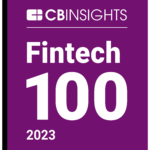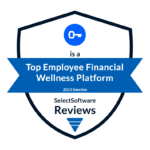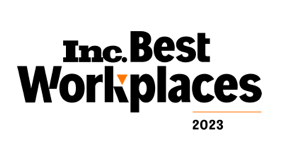Key takeaways
|
The Secure 2.0 legislation signed into law in late 2022 cleared the way for employers to allow 401(k) matches to be made based on employees’ student loan payments starting in 2024. The provision is short and industry coverage has focused on the fact that it will help employers use tax-advantaged dollars to attract employees burdened with student debt.
What hasn’t received a lot of attention is how this new option creates a new set of dangers around student loans and 401(k) decision making. The law also does nothing to mitigate these dangers, such as by improving support for employees navigating their student loans.
How confusion around income-driven student loan repayment program could financially hurt employees
Imagine the year is 2024, and “Chris,” a hypothetical millennial with almost all federal student loan debt (which represents the vast majority of student debt borrowers), gets more generous relief from the federal government to reduce the burden of repaying this debt. Chris qualified for a $0 student loan payment due to his income and family size with the student loan repayment program SAVE.
In addition, Chris’s employer offers a 3% dollar for dollar match on his 401(k). Chris has heard that prioritizing debt payoff first is a smart money move, but he and his wife and three kids qualify for $0 monthly loan payments with his student loan income-driven repayment plan. So up until now, he hasn’t prioritized his student debt.
Now Chris hears that his employer is rolling out a new benefit feature. He can get a dollar for dollar match from his employer in his 401(k), in exchange for paying down that student debt.
He’s excited! He’s got the chance to get “free money” in the form of an employer 401(k) match, once he’s paid off his student loan debt. He stops contributing 3% of his pay to retirement and instead puts that toward his student loans.
Unbeknownst to Chris (or his employer), there are two reasons this well-intentioned move may have just cost him a lot of money.
1. Chris doesn’t have emergency savings
Research shows financially stressed employees like Chris do not have a large enough cash cushion for emergencies, much less retirement. They need to be making active contributions to emergency savings and their 401(k)s, at the very least, to weather that next emergency without it spiraling into a true catastrophe.
Emergency savings can be the difference between Chris getting a broken-down car repaired and quickly back on the road so he can show up to work on time, versus missing a week of work and getting so behind that Chris and his family could be facing eviction or job loss.
2. Chris lost the ability to have his entire student loan principal forgiven
Wouldn’t Chris benefit from the debt paydown, even if he gives up on the savings he would have accumulated? Perhaps… or those dollars will be partially or fully wasted. Under his SAVE plan, Chris will effectively be paying 0% interest as long as his income and debt stay within his current levels. His principal will be entirely forgiven in as little as 10 years since he started in an income-driven repayment program.
In other words, Chris could be on a path to full debt forgiveness much faster than he planned, and he may have no idea.
Do you think Chris wouldn’t make this mistake? Think again. Brightside has helped federal student loan borrowers navigate their debt for years and seen the confusion surrounding student loans firsthand.
Many borrowers have no idea if their loans are federal or private, much less the specific income-driven repayment plan they are enrolled in and its terms, or what rates or fees they are paying. In fact, one study reveals that nearly half of federal student loan borrowers don’t know how much they owe, and 57% don’t know their loan servicer.
Without a source of unbiased support and guidance, their decisions are often haphazard and contrary to their own best interests.
With the scale of generosity, income-driven repayment will become the norm, rather than an exception, and $0 payments will be much more common. Under SAVE, an individual borrower who makes $32,800 annually or less, or a borrower in a family of four who makes $67,500 a year or less, will not owe loan payments.
How employers can help employees avoid costly mistakes with student loan matching programs
The Secure 2.0 law does nothing to prevent mistakes like the one Chris could be enticed into by a well-intentioned employer match for his student loan payments. But employers can exercise their own leadership to prevent programs from inadvertently encouraging the Chrises of the world from diverting money, which would normally go into 401(k)s or emergency savings accounts, into student loan debt that could otherwise be forgiven or heavily subsidized.
Here are two things employers can do:
- Consider the ROI of student debt matching programs, now that the facts have changed and the underlying relevance, equity, and recruitment rationale of these programs isn’t what it once was. The new SAVE program means that many financially stressed workers may have $0 required payments or very low payments, and qualify for forgiveness in as little as 10 years. And since employees can get credit for prior years in other IDR programs, they can start qualifying for forgiveness as soon as the program takes effect.
- Minimize the risk of unintended consequences by complementing student debt matching programs with holistic Financial Care. Through this type of employee benefit, employees will have unbiased help to navigate their student debt and make sure they are enrolled in the student loan repayment plan that minimizes their costs and maximizes their chance of forgiveness. The employee will also get personalized education via Financial Care to help them understand whether to prioritize student debt, based on their financial big picture.
Brightside created Financial Care, a new category in employee benefits designed to improve the financial health of working families. Financial Care can offer holistic financial navigation to help employees avoid costly mistakes, and reduce placing unnecessary risk and burdens on HR and benefits teams. To learn more and/or schedule a demo, click here.





